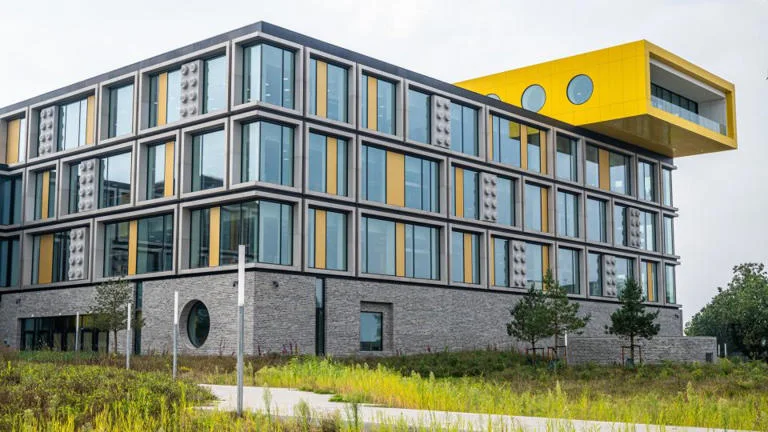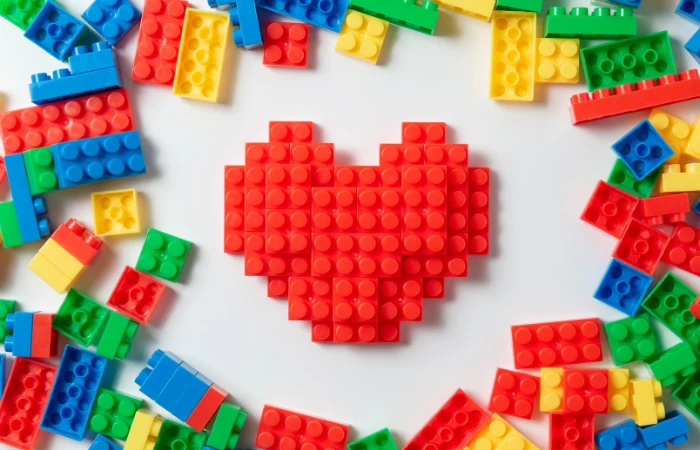Lego, the largest toy company in the world, known for its enduring bricks, is often celebrated for its green endeavors. Their dedication to a better planet was exemplified by a whopping $1.4 billion commitment towards slashing carbon emissions by 2025. With sustainability at the heart of their mission, their objective is clear: leaving behind a healthy Earth for our young Lego enthusiasts and the generations that follow.
However, eyebrows were raised when it emerged that Lego abandoned its much-publicized “Bottles to Bricks” scheme in September 2023. This eco-project aimed to reinvent the classic Lego brick using recycled plastic bottles. But the plot twist came when Lego’s in-depth assessment revealed a harsh reality: converting these bottles into durable bricks would actually boost carbon emissions.
Consequently, Lego chose to retain their existing materials, while also questing for greener alternatives.

Such decisions hint at a broader trend where companies are meticulously dissecting the environmental consequences of their entire supply chain. The quest for true sustainability demands a holistic view. It’s not enough to just see the tip of the iceberg; companies must examine the whole iceberg – from the procurement of raw materials to the final product’s disposal.
To quantify this, emissions are segmented into three categories:
- Scope 1: Direct emissions from company operations
- Scope 2: Emissions from consumed utilities, like electricity.
- Scope 3: The trickiest of the lot, covering emissions from the entire supply chain.
While fewer than 30% of companies are currently unearthing the hidden truth of scope 3 emissions, Lego’s meticulous study is a wake-up call. For Lego, a whopping 98% of its carbon footprint is rooted in scope 3. And many other corporations will likely discover similar patterns as they dig deeper.
This revelation underscores the importance of policies geared towards transparency in emissions. Recent initiatives in the European Union and forthcoming ones in California are pushing for companies to be more open about their scope 3 emissions. These efforts aim to ensure that companies aren’t merely “green-talking”, but truly “green-walking”, by addressing their entire carbon footprint.
In essence, Lego’s story is a reminder that true sustainability isn’t a milestone but a journey. It emphasizes the need for a richer, multifaceted grasp of environmental impact. It’s not just about lofty goals, but about continually reassessing and refining the path toward them. And at the heart of it all lies one fundamental truth: sustainability is an ever-evolving pursuit for the welfare of the generations to come.
Lego Is Choosing Reality Over Greenwashing Mirage
When it comes to corporate responsibility, there’s an unsettling trend that consumers grapple with daily: greenwashing.
At its core, greenwashing is when a company or organization spends more time and resources boasting about its eco-friendly practices than actively implementing those practices. It’s a marketing tactic, used to tap into the increasing consumer demand for sustainable products without making the necessary changes.
And the companies that have embraced greenwashing don’t care whether it makes a real difference to the environment or not (and often, it doesn’t).
Several of Lego’s competitors in the toy industry have been accused of greenwashing. On the surface, many of these companies promote eco-friendly packaging, sustainable sourcing, or recycling programs. Yet, dig a little deeper, and the reality is often far from their verdant claims.
A toy line might proudly state it’s made from recycled materials, but on closer inspection, only a tiny percentage of the product is. Or, a brand might tout a new eco-friendly initiative, while simultaneously ramping up production in ways that harm the environment.
The danger of greenwashing goes beyond mere corporate deceit.
It muddies the waters for consumers, making it difficult to discern genuinely sustainable products from those merely cloaked in a green veneer. It undermines the efforts of companies, like Lego, that are genuinely striving to make a difference. And, importantly, it slows global progress.
When companies feign eco-friendliness instead of making real changes, it impedes the collective shift toward sustainability that our planet so desperately needs.
Lego’s rigorous assessment of its “Bottles to Bricks” initiative stands in stark contrast to these greenwashing tendencies. While it might have been easier, and even more profitable in the short term, to continue with the program regardless of its actual environmental impact, Lego chose transparency and integrity.
This decision not only sets them apart in the toy industry but positions them as a beacon for other global corporations. It sends a clear message: genuine commitment to the environment supersedes fleeting marketing gains.
The next time you see a “green” claim, prompt yourself to question, research, and validate.
In an age where green marketing can be more about optics than impact, Lego’s genuine efforts are a refreshing reminder that true sustainability requires continuous introspection, honesty, and sometimes, the courage to admit that the greener path isn’t always the most obvious one.
Lego CEO Speaks On Strategic Sustainability

Our philosophy has been for a while that we want to be regional in the world, as we say. We want to kind of produce product in the Americas for the Americas, same in Europe for Europe and in Asia for Asia.
The logic is, of course, the proximity to consumers, so we can cater for mixed changes and whatever they would like to see right now. But also for sustainability reasons: We do not want to have a lot of Lego sets floating around on boats that needs to be transported here and there. So the proximity matters for us.
We’ve always been committed to keeping [plants] close also because in the Lego box, there’s just too much air shipping around the globe. We’ve been very conscious about the sustainability element of the CO2 emission coming from all the transportation. So that’s been all on our agenda for a long time.
More To Discover
- Fusion Milestone Achieved: Experiment Generates More Energy Than It Consumes
- Iceland Unveils World’s Largest ‘Climate Vacuum’ to Tackle Atmospheric Carbon
- LanzaJet’s Sustainable Plant In Georgia Will Produce 10 Million Gallons of Eco-Friendly Jet Fuel to Tackle Airline Emissions
- Graveyard of Massive Wind Turbine Blades Have Taken Over Texas Town, Making It the Epicenter of Greenwashed Waste
In order to lower carbon emissions, Lego has expanded to five manufacturing centers on three continents that produce around 36 billion blocks annually. Currently, the Lego Group manufactures in the Czech Republic (Czechia), Denmark, Hungary, China and Mexico.
Ever wonder how Lego blocks are actually made? Us too, which is why we tracked down this 8-minute video that provides an overview of the entire manufacturing process. Only when we better understand all the moving parts can we truly appreciate the full scope of Lego’s decision to avoid greenwashing!



















